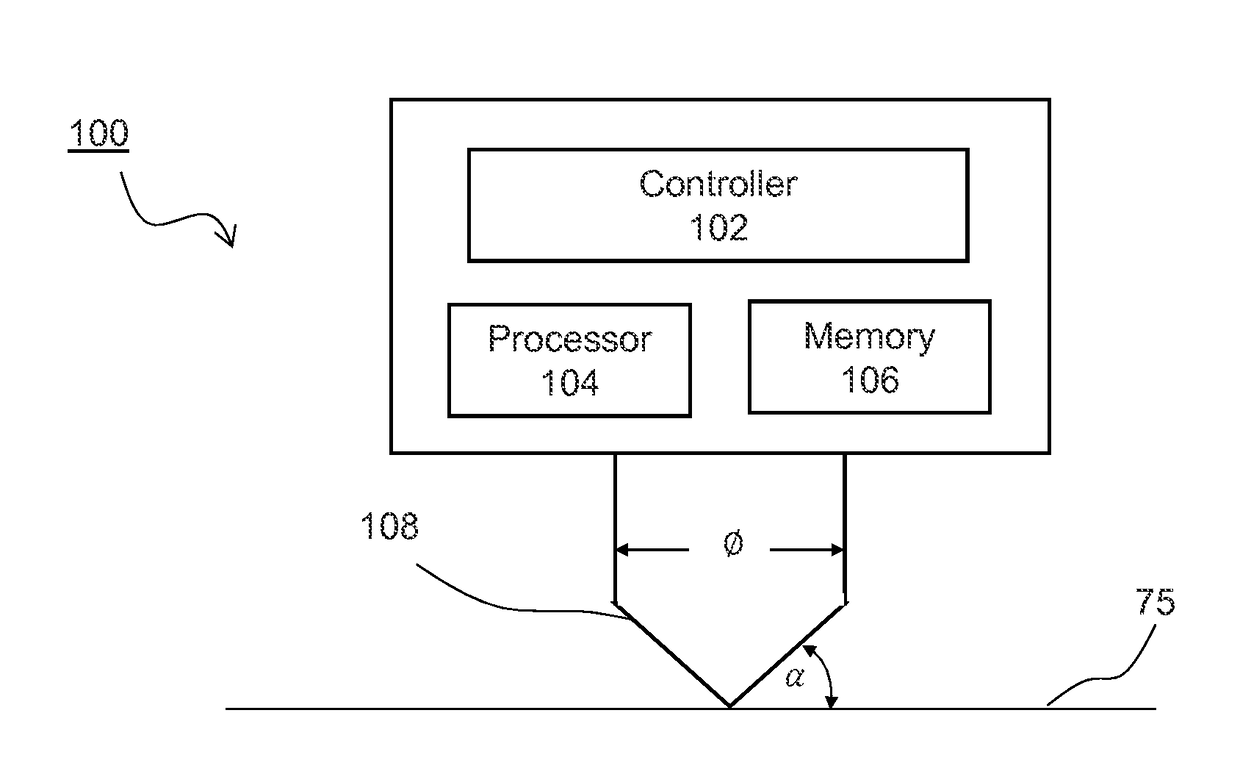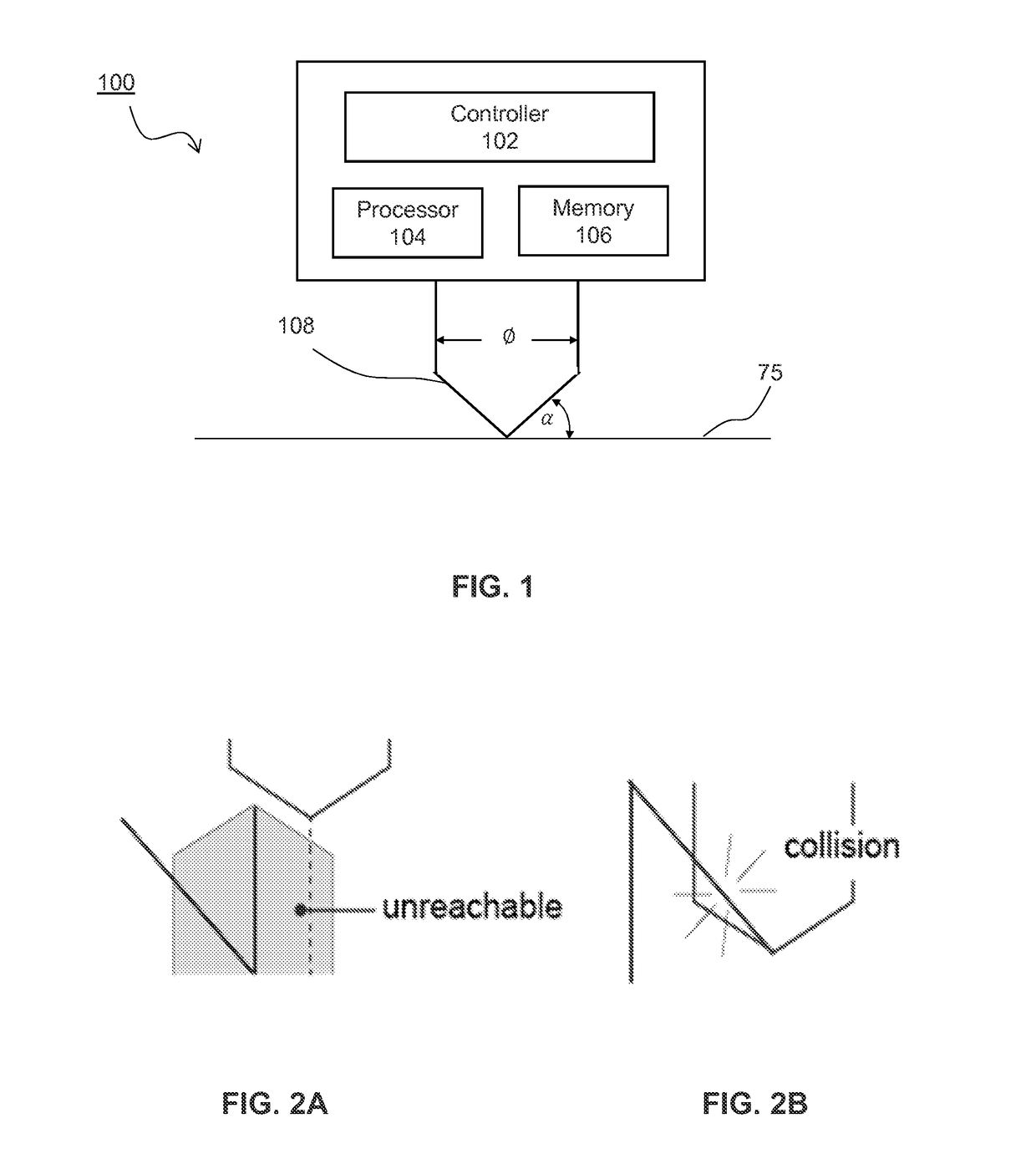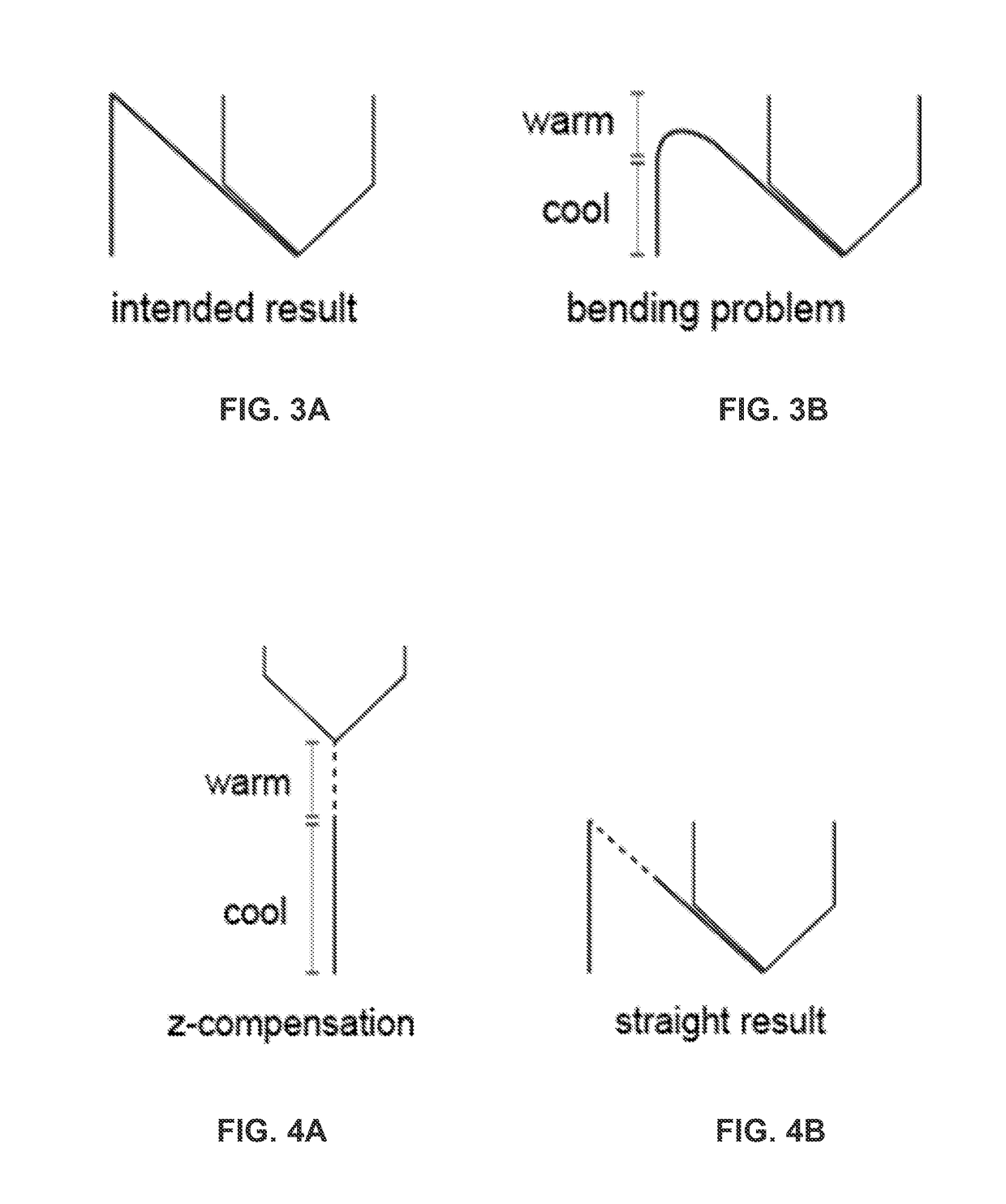System and methods for three-dimensional printing
a computer system and three-dimensional printing technology, applied in the field of computer systems and methods for fabricating three-dimensional (3d) objects using 3d printing, can solve the problems of long design process, inability to accurately predict the size of the object, and certain 3d printers are inherently slow by fabricating objects voxels, etc., to achieve quick transition time and reduce the volume of the object
- Summary
- Abstract
- Description
- Claims
- Application Information
AI Technical Summary
Benefits of technology
Problems solved by technology
Method used
Image
Examples
Embodiment Construction
[0035]Unlike traditional 3D printers that stack filament material on filament material, the invention fabricates objects by alternating between (a) printing a contour or layer and (b) printing a mesh pattern on top of the contour.
[0036]FIG. 1 illustrates an exemplary 3D printing device 100 according to the invention. 3D printing device 100 is capable of fabricating a 3D object and includes at least a controller 102, a processor 104, and a memory 106. The printing device 100 includes a print head 108 that extrudes filament material onto a support surface 75 such as a platform or plate. The device 100 uses digital data such as a CAD model.
[0037]The invention advantageously can be implemented in a 3D printer, for example, as software stored in memory 106. The software may be in the form of a program configured with existing systems either before or after market. The software is processed by the processor 104 such that the controller 102 controls the device 100, i.e., moves the print he...
PUM
 Login to View More
Login to View More Abstract
Description
Claims
Application Information
 Login to View More
Login to View More - R&D
- Intellectual Property
- Life Sciences
- Materials
- Tech Scout
- Unparalleled Data Quality
- Higher Quality Content
- 60% Fewer Hallucinations
Browse by: Latest US Patents, China's latest patents, Technical Efficacy Thesaurus, Application Domain, Technology Topic, Popular Technical Reports.
© 2025 PatSnap. All rights reserved.Legal|Privacy policy|Modern Slavery Act Transparency Statement|Sitemap|About US| Contact US: help@patsnap.com



